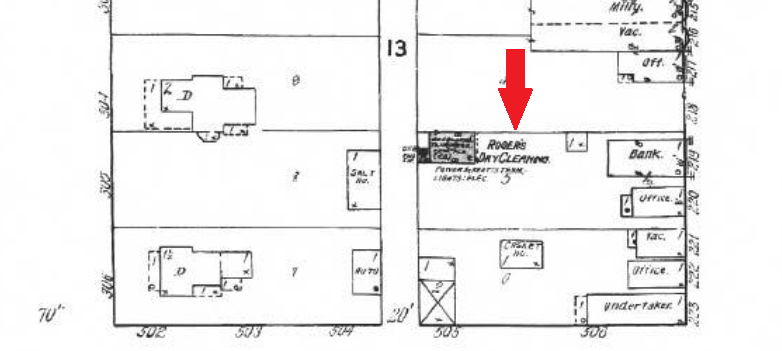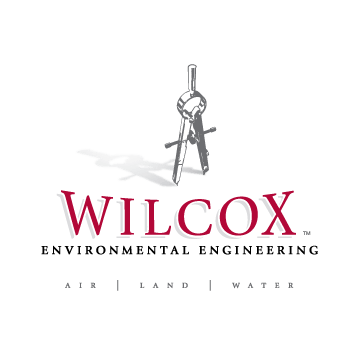By Patrick Rohan, Senior Project Manager
A new project has just been awarded and it’s time to hit the ground running – ready, set, go! Whoa there pilgrim! Performing a solid due diligence investigation as part of a Phase I Environmental Site Assessment (ESA) should be the first line of defense in any environmental project. In fact, performing Phase I-type services for any new project, even those with historical sampling activities, could provide useful information about potential off-site sources, as illustrated later in this overview.
A Phase I ESA is essential for the prospective purchaser who is typically the user (but not always) and plans to rely on the ASTM standard to obtain liability protection. Users requiring a Phase I ESA should ensure that the environmental professional it selects to conduct or update a Phase I ESA follows the procedures in ASTM E1527-13 (also regarded as “all appropriate inquiries” under the federal Superfund Law CERCLA). The benefits of conducting a thorough Phase I ESA will assist the user in determining if the property in question is still worth pursuing, if additional property transaction negotiations are needed or if the environmental risk is too great (Hasta La Vista Baby). Best to know upfront what potential liability exists before obtaining a property with costly environmental obligations that may extend far into the future.
The Phase I ESA has morphed over the years from literally a document that didn’t require you to be a “rocket scientist” (ASTM Standard 1993) to the current guidelines published in 2013. In fact, ASTM E1527 has had several revisions over time: 1993, 1997, 2000, 2005, and 2013. Some of the more important or significant ASTM E1527 milestones occurred in 2005 and 2013. In 2005, the EPA revamped its version of the “all appropriate inquiry” to meet the requirements of the Small Business Liability Relief and Brownfields Revitalization Act (Brownfields Act) of 2002. The key changes of the current ASTM E 1527-13 standard included the definition of an environmental professional (EP); new or updated definitions of a recognized environmental condition (REC), controlled RECs, historical RECs; on and off-site vapor migration evaluation; a more comprehensive regulatory file review; and revisions to the user responsibility section. Of special note: regulatory file reviews are not necessarily limited to user provided environmentally-related reports or publicly available file reviews such as documents located on the IDEM virtual file cabinet and Freedom of Information Act (FOIA) requests with local health/fire departments but historical documents as well. Historical documents would include old Sanborn Fire Insurance Maps, city directories, tax records, plat maps, aerial photographs, and any or all historical maps, newspapers, or even phone books located in multiple town libraries (e.g. Genealogy Section).
For existing projects, the process of understanding the site’s history is crucial in determining exposure pathway evaluations, developing lines of evidence, and constructing a route for further investigative studies. Often, projects are reassigned to us from competitors where extensive environmental work has already has been completed or clients ask for certain stipulations on how we proceed often by-passing due diligence activities. Depending upon when the previous environmental work was performed or what version of ASTM guidelines were in-place, data gaps can often arise.
Questions to ask yourself prior to initiating environmental work activities should be:
• Was there a previous Phase I ESA completed at the subject property? And, if so, how long ago was it completed? Is it still relevant? Did the Phase I ESA follow the appropriate ASTM guidelines?
• If no Phase I ESA was completed then what other investigative reports are available for the site (e.g. initial site investigations, further site investigations, property audit reports, etc.)?
• Do the available reports include an extensive review of the site history including adjacent or nearby property uses?
A couple of examples come to mind for addressing data gaps that should have been discovered from previous due diligence activities. A recent Phase I ESA report was provided to us for review prior to initiating a limited site investigation located in a rural downtown property and included collection of soil and groundwater samples. The girthy Phase I ESA report looked promising but soon began to lose its luster upon further analysis. No vapor migration or review of historical documents (Sanborn Fire Insurance Maps) at adjacent properties was completed. Upon further evaluation, it was determined that a former dry cleaner with solvent tanks once operated on a portion of the subject property requiring investigation. Such information not only changed the locations of soil boring placement but the laboratory testing parameters and property transaction discussions with the client.

Another example included a desktop evaluation of city directories at the Indiana State Library for a dry cleaner site with years of environmental data but very little information on previous site and off-site facility uses. Upon review of the city directories, it was determined that an off-site restaurant had once served as a previously unknown full-service dry-cleaning facility in the 1950-60’s potentially explaining elevated concentration of chlorinated volatile organic compounds in groundwater near this off-site location. Such information assisted with validating previous reviews of the sanitary sewer pathway evaluation study and response comments to IDEM.
In conclusion, up front due diligence is an effective and useful tool in evaluating new and old properties alike by providing a clearer picture of previous site and off-site usage, possible areas of contamination or concern, and assist in strategies for further site investigations and eventual remediation. Additional due diligence prior to the on-set of large environmental investigations is a cost-effective approach hopefully off-setting headaches in the future.
As an update to the status of the ASTM Standard 1527 as provided by an E50.02 ASTM subcommittee member, the E1527 Task Group will start working on possible revisions to the Phase I Standard next year. Only very preliminary discussions have occurred so far to identify sections that people think may need revision or updating. It’s expected that it will be another 12-18 months before the subcommittee will know what proposed changes may make it through the ASTM revision and voting process. The standard needs to be revised by the Task Group, approved by both ASTM voting members and the EPA, and then published before the end of 2021.
Additional information pertaining to AAI and the 2013 ASTM standards can be found at the links below:
https://www.epa.gov/sites/production/files/2015-05/documents/aai_reporting_factsheet.pdf
https://www.epa.gov/brownfields/brownfields-all-appropriate-inquiries
https://www.epa.gov/sites/production/files/2015-09/documents/ep_deffactsheet.pdf
If you need assistance with due diligence issues including environmental site assessment, please contact Wilcox today – call (877) 683-8378 or email mailto:info@wilcoxenv.com. Our team of Phase I ESA experts and experienced scientists at our offices in Indianapolis, Evansville, Ft. Wayne, Cincinnati, OH and Cedarburg, WI are ready to help you find a solution.
Click here to request a phase 1 quote.
Patrick Rohan, CHMM
Senior Project Manager
